For decades, flying to Hawaii was, if nothing else, romantic. It once meant flying on big planes like the iconic Boeing 747, which had double aisles, large galleys, spiral staircases, and lounges in the sky. Widebody aircraft, including Hawaiian Airlines’ Airbus A330s, helped define what travel to the islands felt like.
But in reality, the other airlines flying to Hawaii from the mainland moved on from that widebody-centric model years ago. They swapped out their widebodies for narrow-body aircraft like the A321neo and 737 MAX on all but the longest or most densely traveled routes. These smaller planes are up to 20 percent more fuel-efficient, require fewer crew, are more nimble, and cost far less to operate, both in money and emissions.
But in the movie away from widebody, Hawaiian Airlines has held out admirably longer than anyone.
Hawaiian’s romantic widebody vision was appealing but not financially sound.
While other airlines were cutting costs with narrowbodies, Hawaiian stuck with a widebody-heavy strategy, sending its A330s on what are, for widebody’s, short hops from the West Coast.
The problem is that those jets were, for the most part, never designed for that kind of flying. Especially when combined with how Hawaiian used them, which included long aircraft layovers. The A330 is, after all, a long-haul aircraft, meant for longer missions—not the relatively short 5-hour segments from California to Hawaii, followed often by a long idle wait before returning.
Underuse of a costly aircraft fleet has been one of the reasons Hawaiian Airlines lost money year after year. While this may have created a beautiful brand image enjoyed and respected worldwide, it simply wasn’t sustainable. In part, this nearly drove the airline into bankruptcy.
As Beat of Hawaii reader Leonard L. said, “The widebodies in Hawaii (were) nice while it lasted.” Another longtime commenter, Mark M., added: “The widebody fleet was a symbol of the Hawaiian experience, and now it’s being used on a route that doesn’t seem to match.”
What changes to expect under Alaska Airlines.
The official party line from Hawaiian Airlines on the future of widebody planes is this:
“Hawaiian does and will continue to offer robust widebody service to and from Hawai’i, both on domestic and international long-haul flying, as well as between the islands and deep passenger and cargo West Coast markets such as SEA, SFO, LAX, and more.” –Hawaiian Airlines’ Spokesperson.
With Hawaiian’s acquisition by Alaska, and the final integration push now underway, we believe that Alaska Airlines has no intention of continuing any strategy that doesn’t work financially. They are, if nothing else, a very savvy company that can compete with the biggest airline players, American, Delta, Southwest, and United.
The Dreamliners that Hawaiian once planned to base in Honolulu will inevitably be repositioned to Seattle. That’s simply what makes sense. On that point Hawaiian wrote to us, clearly omitting mention of Honolulu, “Boeing 787s will be deployed in markets with high premium demand and where we can maximize their superior fuel efficiency.” That, even as the Dreamliner will for now at least be winging its way between Honolulu and New York.
Will Dreamliners fly from Hawaii? We think it will likely be more the exception rather than the rule, despite what was once Hawaiian’s standalone vision. From its Seattle hub, Alaska can utilize them for Asia-Pacific and transatlantic flights — the real money-makers, rather than shorter-haul routes to Hawaii.
This isn’t about gutting Hawaiian’s identity. It’s about correcting a costly mismatch between aircraft, routes and timing. Widebodies will still fly to Hawaii, when and where they make sense, including long-distance routes like New York to Honolulu and international destinations such as Tokyo, Sydney, and Auckland. However, on most of what remains of Hawaiian’s network, we predict the shift to mostly narrow-body aircraft is inevitable and what makes sense.
That includes more routes operated by both the Hawaiian A321neo and Alaska’s growing fleet of Boeing 737 MAX jets.
A fleet grounded in financial reality.
Alaska has already committed to refreshing Hawaiian’s A330 cabins. The airline has said it will add true premium economy. It will likely change to new industry-standard lie-flat business seating and an updated interior that aligns the aircraft with current international standards.
At the same time, Alaska is removing redundancy and inefficiency wherever possible. That’s why Alaska said it would apply “discipline” to Hawaiian’s legacy routes, and that’s precisely what is being addressed. Rather than operate two widebody fleets, Alaska will likely take over Hawaiian’s Boeing 787 Dreamliners, including branding of those planes, and base them where they can fly full, long-haul missions from high-demand markets that improve the bottom line. As the company has stated, that includes upcoming routes from Seattle to Asia and Europe in 2026.
This allows Alaska to launch a global expansion without waiting years to compete for new aircraft. For Hawaiian’s operations, it means the widebody fleet will be trimmed and redeployed more strategically.
Alaska used these words regarding their handling of Hawaiian’s network: “Discipline will be forced.“
What this means for travelers to Hawaii.
The days of flying a widebody to Hawaii from most West Coast cities could be ending. That doesn’t mean widebodies are vanishing altogether — it just means they’re becoming intentional, high-efficiency tools rather than everyday rides that don’t make financial sense.
The most significant difference for travelers will be felt onboard. Narrow-body aircraft have a single aisle, fewer premium seats, no lie-flats, and less personal space overall. Entertainment systems and onboard amenities may be more limited. Families, older travelers, and anyone used to the space of an A330, or its seven onboard lavatories, will likely feel the squeeze.
Beat of Hawaii reader Bill W. put it bluntly: “These narrow-body planes have really taken the joy out of it. If you’re sitting in the back, it’s a battle just to get up to stretch or go to the restroom without bumping into half the plane.”
Still, there are upsides. These smaller aircraft make it possible to offer more Hawaii flights from more cities. They allow airlines to adjust seasonally and reach destinations that never fill a widebody. And for many travelers, the tradeoff for slightly less comfort is often a lower fare and a direct flight to the island of choice.
Why was this change always coming?
This isn’t a story about Alaska Airlines reshaping Hawaiian from the outside. It’s a story about how Hawaiian’s old strategy had simply stopped working.
The A330s were beautiful and beloved, but they were doing narrow-body work on routes that couldn’t justify their cost. The planes sat on the ground too long. Flights lost money. And the numbers stopped making sense long ago.
Meanwhile, every other airline flying to Hawaii has already made the switch. United, Delta, American—all have deployed more narrowbodies to the islands for years. Even Southwest entered the market with an all-737 fleet and grew rapidly, thanks in part to its lower cost base and flexible operations.
Hawaiian was late to the narrow-body move.
In other words, Hawaiian is just the last domino to fall. However, because of its brand identity and deep emotional connection with Hawaii travelers, that fall is hitting differently.
While other airlines were well into their shift to narrowbody aircraft many years ago, Hawaiian only joined the movement in 2018. That’s when they first introduced the A321neo narrow-body on flights to and from the mainland — marking their first real step away from a widebody-only model.
We were onboard the premier inaugural flight and shared our firsthand experience: Trip Report: Hawaiian Airlines A321neo.
Even then, Hawaiian kept the A321neo limited largely to secondary West Coast routes, while continuing to rely heavily on its larger fleet of A330 widebodies. Now, with Dreamliners arriving and the industry fully shifting, that long hesitation is catching up.
The new era of Hawaii flights has already begun.
For travelers, this shift is both practical and symbolic. It does mean more options, more flights, and at least the potential for lower fares. But it also means saying goodbye to much of a certain kind of Hawaii travel experience built around big planes, big space, and big expectations. And who didn’t love that?
And, whether travelers love or hate it, this is where the industry has been headed for a very long time.
Hawaiian Airlines just took longer to get there than the rest. We look forward to your comments!
Get Breaking Hawaii Travel News
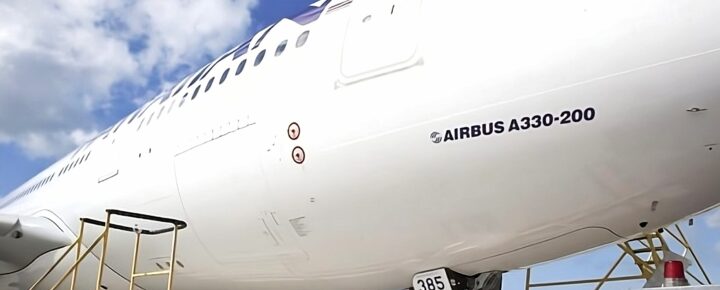
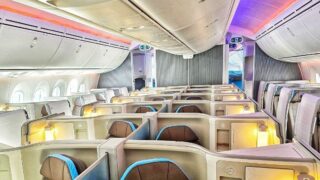
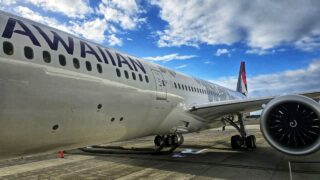
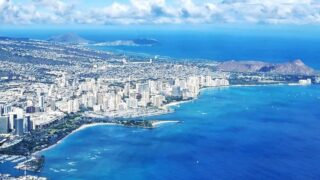
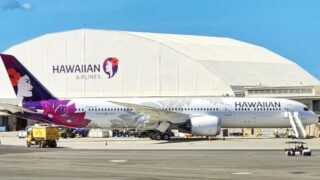
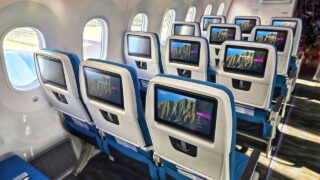
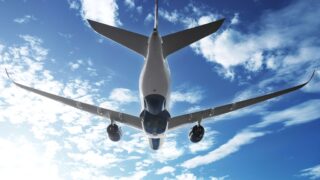
Another reason not to go. Everything quality and comfortable is going. Notice the word “emissions” is in the article. What a surprise. The hoax destroys another comfort.
This article sounds like a commercial for Alaska. Are you sure you aren’t a shill for them?
Try harder to be a travel blog about Hawaii not an apologist for the airlines.
I had to reread the article to see what i had missed that prompted your comment.
After rereading it, it still says HA had good service that made to sense financially and almost put them out of business.
AS is all about making money, and that will come at the expense of travelers to Hawaii, who will experience less service for more money.
Who are they trying to make look good: the company that can’t run an airline, or one that only cares about RPM?
Hey Alaska/Hawaiian,
No widebody from Seattle to Hawaii = no customer.
It’s that simple.
Sorry there is No way I am sitting in a narrow body single isle 3×3 seating for 5 hours on a vacation. I will simply not go to Hawaii.
and No Premium seats are Not in a 3×3 configuration.
Aloha
I’ve flown on United and Delta widebody planes for many years. Both companies still offer widebody flights to most of the islands. I agree that the narrow body flights are terrible and have even flown somewhere else altogether.
U mean Hawn exe Mgmt was too incompetent to recognize this simple mismatch. They got their golden parachutes while many local mid mgr and below positions were negatively impacted
I was told if you had a safe takeoff, no weather issues, no mechanical problems, and a safe landing that justifies a good flight. Other than that quit complaining and shut up.
Bottom line beggars can’t be choosers and that phrase has been around for a long time. Now I guess the priority would be the departing times and arrival times in making your vacation more stress free. Being cramped like sardines in an airline is the same feeling it is to stand in line at some restaurant, park your car, and anything at the airport. Sorry get used to it. Welcome to Hawaii.
Your article on usage wide body A/C in Hawaii. Let’s not forget the primary industry of Hawaii is tourism.
Aloha and Hawaiian took their cue from the Domestic operators, and eventually from the Asian carriers.
Wide body A/C was the answer. However, what crushed the concept, was the Pandemic.
And One-Party Hawaii Rule, following California, Illinois, Michigan, NY and NJ, Under former Governor Ige!
In today’s world you do not need (nor does it pencil out) a widebody from the west coast to Hawaii. For the same reason you dont fly a widebody from Seattle to Boston.
Back in the 1960s, 70s, 80s, yes, aircraft didn’t reach. Today, technology has changed the game
My wife Dianna and I just did our most likely last flight due to age mobility issues catching up to us to Hawaii out of Phoenix to Kauai for 10 superb days on a HA Boeing 787 Dreamliner in First Class for her 80th birthday using up all my CC Points. The Crew was impressive, the food was really good, and flights smooth. Spent 3 days in Hanalei and Princeville in a VRBO then 7 days in Poipu at Sheraton on points also. No cooking in VRBO as do not take wife on vacation and have her cook and clean up. Intermingled with Locals and the Rosters and enjoyed the local cuisine. Previous trip before this was to Maui at the Kaanapali Alii just 3 weeks before the fire devastation. Mahalo for the memories and the art work collected created by Roy Tabora, George Sumner, and Christian Lassen will ease the pain of not being able to return BUT hopefully our bodies will hold up and we can do one more visit to our favorite islands. Not looking forward to those sardine narrow body aircraft if we can go.
Unless one is sitting up front, there is little if any comfort to be had in coach. A single aisle jet can get really cramped, five hours really pushes the limit for me. The widebodies are meant for longer trips. Anything more than 5 hours is a long trip. Most of the US is more than 5 hours from Hawaii. These single aisle planes should be configured with more leg room to compensate for the longer flights. Just a wish I suppose.
Well it’s a long flight from san diego and if they’re gonna put me on an uncomfortable airplane I can just go somewhere else.
These are the same airplane you will take somewhere else domestiically.
6 hrs to NYC or DC, or 6 hrs to Hawaii. What’s the difference?
I’ll miss the double aisles and ample space the Airbus 330 afforded on flights home to Hawai’i.
As long as they don’t cut POG juice service, I’ll try to adjust flying home to Hawai’i on a single aisle, as I did on the 707’s and DC-8’s decades ago.
I am in Europe now. Flew first/business on Alaska KOA to ORD, Aer Lingus ORD to AMS. That is 4 flights from Kona. 24 hours give or take. If AS had a non stop from SEA to LHR that would bring the total flight hours down and necessitate only 3 flights. That would be better than 4. The hope for me is that they do not make me fly to SEA from KOA for a flight to HND or SYD.
The service/food in first class on AS was acceptable, but not nearly as nice on the lie flats in the A330 on Aer Lingus. Food on Aer Lingus was definitely better.
Thanks gentlemen for the great article.
737’s and 321’s were never designed to be 5+ hours in their current configurations but all of the US Carriers have switched. Personally, I will pay more to fly in comfort, but that is increasingly getting harder to find Carriers that will provide a premium product even in first class. When Hawaiian ends their West coast twin isle service it will be the end of a era.
I used to prefer wide-bodies from the mainland to Hawaii but now I am not so sure they really make a difference. Yes, there are two aisles, but have you tried to cross from one aisle to the other recently in economy? It’s not so easy to do when the plane is at or near capacity. So, it’s kind of like flying 2 single aisle planes at the same time!
A bigger plane doesn’t necessarily mean more personal space, seat pitch, etc.
Hmm. One of the least liked flights from west coast to HNL was last month aboard Hawaiian wide-body. The plane was old, out of date, uncomfortable, and service was embarrassing by Hawaiian Airlines standards. The crew must be feeling the vibes, too because they were short and terse with passengers – who were no picnic themselves, either. Best thing about the flight, however, was Starlink! From the moment we hit 10k feet we could work on emails, browse the internet, even stream seeming better than at my house! It was epic. Didn’t need their screen on the back of a seat, I streamed movies on my iPad with no latency. It even worked on the next HA leg to New Zealand without dropping out. It was Free. Thank you Hawaiian! PS. Crew told me these old planes are getting refurbished. Not a minute too soon. PS. My HNL to PDX flight originated in Shanghai, with stop in HNL – so these wide-bodies are being put through their paces.
Thank you Alaska for buying Hawaiian Airlines…my HA stock has tripled!! Keep up the good work…
Good morning from the Land down under. A question if I may, how does this affect the Sydney Honolulu route. We have flown Hawaiian, and found the crew and aircraft great. With our daughter relocating to Hawaii with her Hawaiian husband and triplet 2 year old grandsons, my wife andI will be travelling to the Islands more frequently.
Yes, UA flew mostly 747s and AA operated mostly DC-10s from the mainland, but they most often were not full flights. I recall trips in the late 1980s with flights operating at barely 50% capacity. The airlines basically were required to use the big multi-engine (more that two engines) widebodies due to FAA over-water requirements. That all changed through the late 1980s and early 1990s as ETOPS requirements evolved, allowing airlines to operate twin-engine jets such as B757 & B767 on the five-hour over-water flight path. Today’s efficient single-aisle twins such as the B737MAX and A320/321 families can easily meet current ETOPS requirements.
As noted, mainland widebody service will most likely be tailored to nonstops from the larger, further hub airports, such as DEN, DFW, ORD, JFK, EWR, ATL, etc.
A benefit of narrow bodies is flight frequency, this gives more schedule flexibility for passengers. For cities within the operational range you can run 2x flights for what would have been one wide body.
My experience goes back to the mid-‘80’s, out of LA, Delta L-1011 in First 2-2-2, before Lie-Flat, but a 5 Hour and Daylight Departures In and Out. By the ‘90’s, American began using the 757, and forced Night-time Returns to LA, and PHX, where we re-located to in ‘91. The Single Aisle 757 is a disaster, in First, poor Service, sleep upright ruined the Vacation. Their 767 to CH was great on overnights. By the early millennia I began with Hawaiian when they introduced PHX-Hono and the Wide Body for 5.5-6 hours was great in First/Business, Day Flights. Red-eye returns to Mainland, are no longer a consideration, after 95 Round-trips since 1986, 737MAX, is not for me, not even PHX-MIA, Phoenix as the Nations 5th largest City deserves better, and someone will see the Market and fill the need. Moving Equipment is the Airlines problem, Daytime Flights in and out is the target to the West Coast the A321 is acceptable, the A330 with it’s 2-2-2 better then 787’s 1-2-1!
Good luck with that.
No one is going to fly a 787 or A330 from Phoenix to Hawaii. Unless Those days are gone.
When planning our first family Hawaiian vacation last summer, considering what plane we should fly wasn’t a consideration…until I started reading Beat of Hawaii. I took that advise, and we flew Hawaiians’ Airbus A330 and it was everything I had hoped it would be. Thank you BoH!
Shocked a company primarily run by locals, was too ignorant to change and do what those mainlanders do. Goes with about every other Gov’t project in Hawaii.
Sooner or later people in Hawaii need to realize things typical run better and are built better outside of Hawaii. Infrastructure, business, schools… you name it, it’s probably being better run on the mainland.
Hawaiian had grand plans to fly all over the South Pacific.
Manilla and China were tried, and didn’t work out for this and that. Covid came, etc. Hawaiian just does not have the capital to expand on its own to gain market share and passengers needed to support these routes. They did try.
I would suspect there will still be some long distance flying from Honolulu to south Pacific destinations that may warrant a larger aircraft from Honolulu. Unlikely too many to see on US mainland long term if the 737 or 321 can make the trip. If it can’t, then best scenario is likely a connection.
Boston and NYC might continue – for now. But look to see frequencies reduced
Widebody flights to Hawaii could make sense as a “filler’ flight. A round trip flight from Seattle to Beijing takes over 24 hours, so the same airplane has to go somewhere else the next day, while still being able to be back in Seattle the following day for a subsequent flight to Beijing. That could be a flight to Hawaii. But, no they won’t be flying a widebody to a short haul destination that is not an Alaska hub.
As much as I loved all of the old widebody flights, competition and cost pressures are real. Airlines gotta survive somehow including Alaska.
Just as I predicted, the “Bean Counters” of Alaska Airlines will utilize HA aircrafts to routes where they can make money. “Leisure” markets have the lowest fares versus “Business” markets has higher fares. We will see more single isle aircrafts to and from Hawaii to the mainland. UA at one time flew nothing but 747 to Hawaii from the mainland. Now it’s mostly single aisle aircrafts.
The 747s were in a different era when single aisle aircraft did not have the range.
Hawaiian was not able to make money. Alaska is going to stabilize Hawaii and use the aircraft better.
Going forward with the MAX 10, I think Alaska Hawaiian would be wise to look at the innovative cabin design concepts utilized by the NW 757-200 or the very similar TZ 757-300. These planes just never did feel cramped for narrow-bodies and were the perfect size for the middle of the market routes to Hawaii.
The problem is they have Way too many A330s. 24 at last count! The State of Hawaii has 1.4 million people. For perspective Massachusetts has 7 million people and Delta bases around 15 wide-bodies at their Logan hub in the Peak summer season.
Gee, I live in Honolulu and I’m wondering if the direct flights to Tokyo, Osaka, Inchon, Sydney, Auckland etc will continue? In fact, I remember direct flights to Shanghai and Beijing, which were wonderful. Are they stranding us out here? Doing now have to fly five hours one way in order to fly 10 hours the other way? What a crazy world we’re living in now.
No, they’re leveraging future Oneworld and other partners (KE and maybe Starlux) to connect.
@Arik–I suspect HNL will retain many if not all of the nonstops you mentioned but some of them may not be on Hawaiian Airline (HA). HA will continue those flights if they make money but if they pull out of those markets, I suspect foreign carriers might step up their schedules. It likely will depend on how Hawai’i fares overall with foreign tourists who would likely make up the vast majority of the passengers.
Do you think they will keep the A330 from Phoenix to HNL? I sure hope so! It’s the reason we fly HA to Hawaii!!
Doubtful, the competition, Southwest and American both fly narrow bodies. Only West Coast city that is guaranteed is Seattle and maybe SF due to Alaska’s hub there.
Unlikely long term. Its not the right aircraft for that route. If Alaska had a hub in Phoenix, perhaps. But it does not pencil out here
I flew that PHX-HNL flight a few weeks ago nd was disappointed that it wasn’t equipped with Starlink (the primary reason I booked HA).
Arrived at HNL and had more than a one hour wait for the club on a 90 min layover, so that didn’t impress.
If I am going to have a connection at HNL and no over water internet to get some work done, I might as well stick with AA.
Thankfully I fly from New York so hopefully the Hawaiian widebodies will continue. I understand the economics but sure miss them everywhere else
🥲
The A321neo is fine for short hops, but 5+ hours to Hawaii feels like a squeeze. Not sure I’d want to book it again unless there is no choice, which might just be the case. Hope at least the price is too good to pass up.
I recently flew from LAX to OGG (Maui) on American Airlines in first class on the 321neo. What a disappointment, no lie flat seat, food was fair at best, flight attendant attention was minimal. Definitely not worth the money! On the way back (OGG-LAX) and (LAX-DFW) did not even get blankets and pillows in first class, no food and it was an overnight flight!! Horrible!
Hawaiian hanging onto their A330s for so long on short flights definitely explains a lot. Makes you wonder how things might have played out if they’d shifted earlier. Maybe they’d still be independent.
It’s sad how air travel to Hawaii has become just another cramped bus ride in the sky. What happened to that sense of aloha in the air? Sign of the times.
Surely I’m the oddball here. But honestly, I’m all for lower fares. I’ll take a tighter cabin over sky-high ticket prices any day.
I really miss the days when flying to Hawaii felt like part of the vacation. The 747 was magic that’s hard to forget to this day. Want to imagine that feeling coming back but it isn’t in the cards nowadays.
Hoping that the HAL wide body from Boston to Honolulu doesn’t get axed. Since Delta experiment failed, leaves the route to Hawaiian. Being able to fly to Honolulu nonstop from Boston makes all the difference. Without that service wouldn’t consider traveling to Hawaii from New England.
Unfortunately, the article doesn’t even mention Boston/Honolulu, currently the longest US domestic airline flight. Previously, the writers here noted that Hawaiian was committed to this route and to using A-330’s to/thru September 2025. Will the route continue after that? If so, will it be served by the A-330, the 787, either, both? If the route goes away, I’ll make the West Coast stop, but will have no loyalty to any one airline if they’re all flying narrow-bodies. Which one to fly will be determined based on schedule, routing, and — most importantly — price. The rest is marketing hoo-ha.
I’m fairly certain we will still see the A330 and the 787 used on mainland to Hawaii routes. The 737 MAX isn’t all that special (nor is it safe). I don’t particularly mind the A321 provided we purchase the extra comfort seats. But there is no way AS/HA completely gets rid of the two wide body options for the smaller and crummy MAX